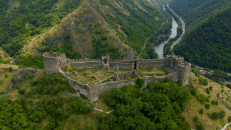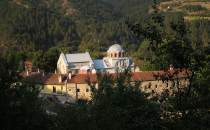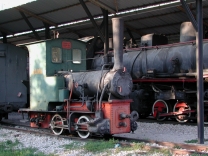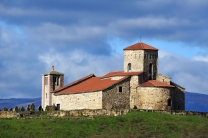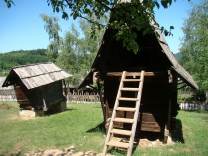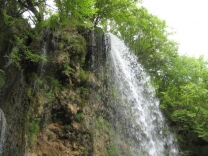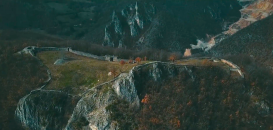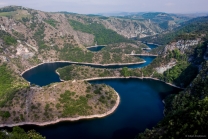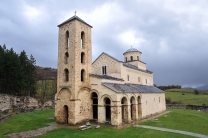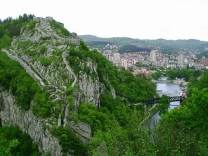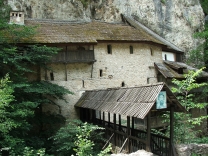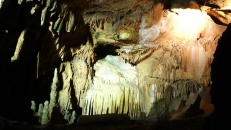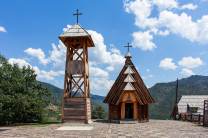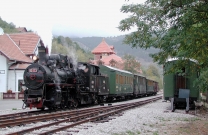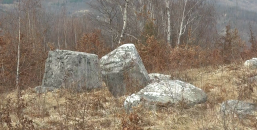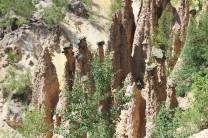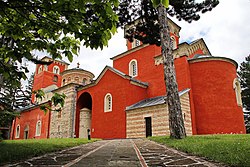
Žiča
Žiča (Serbian Cyrillic: Жича, pronounced [ʒîtʃa] or [ʒîːtʃa]) is an early 13th-century Serbian Orthodox monastery near Kraljevo, Serbia. The monastery, together with the Church of the Holy Dormition, was built by the first King of Serbia, Stefan the First-Crowned and the first Head of the Serbian Church, Saint Sava.
Žiča was the seat of the Archbishop (1219–1253), and by tradition the coronational church of the Serbian kings, although a king could be crowned in any Serbian church, he was never considered a true king until he was anointed in Žiča. Žiča was declared a Cultural Monument of Exceptional Importance in 1979, and it is protected by Serbia. In 2008, Žiča celebrated 800 years of existence.
Background
Founding of Serbian Church
Žiča Monastery entranceThe Serbs were initially under the jurisdiction of the Archbishopric of Ohrid, under the tutelage of the Ecumenical Patriarch of Constantinople. Rastko Nemanjić, the son of Stefan Nemanja, ruled as Grand Prince of Hum 1190-1192, previously held by Grand Prince Miroslav. In the autumn of 1192 (or shortly thereafter)
Rastko joined Russian monks and traveled to Mount Athos where he took monastic vows and spent several years. In 1195, his father joined him, and together they founded the Chilandar, as the base of Serbian religion. Rastko's father died in Hilandar on 13 February 1199; he was later canonised, as Saint Simeon. Rastko built a church and cell at Karyes, where he stayed for some years, becoming a Hieromonk, then an Archimandrite in 1201. He writes the Karyes Typicon during his stay there.
He returned to Serbia in 1207, taking the remains of his father with him, which he relocates to the Studenica monastery, after reconciling Stefan II with Vukan, who had earlier been in a succession feud. Stefan II asked him to remain in Serbia with his clerics. He founded several churches and monasteries, including the Žiča monastery.
Foundation
The monastery was founded by King Stefan Prvovenčani and Saint Sava, in the Rascian architectural style, between 1208 and 1230, with the help of Greek masters.
Stefan the...






